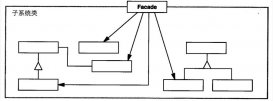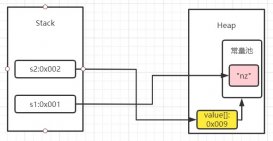本文介绍了浅谈Java的两种多线程实现方式,分享给大家。具有如下:
一、创建多线程的两种方式
Java中,有两种方式可以创建多线程:
1 通过继承Thread类,重写Thread的run()方法,将线程运行的逻辑放在其中
2 通过实现Runnable接口,实例化Thread类
在实际应用中,我们经常用到多线程,如车站的售票系统,车站的各个售票口相当于各个线程。当我们做这个系统的时候可能会想到两种方式来实现,继承Thread类或实现Runnable接口,现在看一下这两种方式实现的两种结果。
程序1:
|
1
2
3
4
5
6
7
8
9
10
11
12
13
14
15
16
17
18
19
20
21
22
23
24
25
26
27
28
29
30
31
32
33
34
35
36
37
38
39
40
41
42
43
44
45
46
47
48
49
50
51
52
53
|
package z; class MyThread extendsThread{ privateintticket = 10; privateString name; publicMyThread(String name){ this.name =name; } publicvoidrun(){ for(inti = 0; i < 500; i++){ if(this.ticket > 0){ System.*out*.println(this.name+"卖票---->"+(this.ticket--)); } } } } public classThreadDemo { publicstaticvoidmain(String[] args) { MyThread mt1= newMyThread("一号窗口"); MyThread mt2= newMyThread("二号窗口"); MyThread mt3= newMyThread("三号窗口"); mt1.start(); mt2.start(); mt3.start(); } } |
运行结果:
一号窗口卖票---->10
一号窗口卖票---->9
一号窗口卖票---->8
一号窗口卖票---->7
一号窗口卖票---->6
一号窗口卖票---->5
一号窗口卖票---->4
一号窗口卖票---->3
一号窗口卖票---->2
一号窗口卖票---->1
三号窗口卖票---->10
三号窗口卖票---->9
三号窗口卖票---->8
三号窗口卖票---->7
二号窗口卖票---->10
二号窗口卖票---->9
二号窗口卖票---->8
三号窗口卖票---->6
三号窗口卖票---->5
三号窗口卖票---->4
三号窗口卖票---->3
二号窗口卖票---->7
二号窗口卖票---->6
二号窗口卖票---->5
二号窗口卖票---->4
二号窗口卖票---->3
二号窗口卖票---->2
二号窗口卖票---->1
三号窗口卖票---->2
三号窗口卖票---->1
程序2:
|
1
2
3
4
5
6
7
8
9
10
11
12
13
14
15
16
17
18
19
20
21
22
23
24
25
26
27
28
29
30
31
32
33
34
35
36
37
38
39
40
41
42
43
44
45
46
|
package z;class MyThread1 implementsRunnable{ privateintticket =10; publicvoidrun(){ for(inti = 0; i<500; i++){ if(this.ticket>0){ System.*out*.println(Thread.*currentThread*().getName()+ "卖票---->"+ (this.ticket--)); } } } } public classRunnableDemo { publicstaticvoidmain(String[] args) { // 设计三个线程 MyThread1 mt = newMyThread1(); Thread t1 = newThread(mt, "一号窗口"); Thread t2 = newThread(mt, "二号窗口"); Thread t3 = newThread(mt, "三号窗口"); t1.start(); t2.start(); t3.start(); } } |
运行结果:
三号窗口卖票---->10
三号窗口卖票---->7
三号窗口卖票---->6
三号窗口卖票---->5
三号窗口卖票---->4
三号窗口卖票---->3
一号窗口卖票---->8
二号窗口卖票---->9
一号窗口卖票---->1
三号窗口卖票---->2
为什么两个程序的结果不同呢?
第1个程序,相当于拿出三件事即三个卖票10张的任务分别分给三个窗口,他们各做各的事各卖各的票各完成各的任务,因为MyThread继承Thread类,所以在new MyThread的时候在创建三个对象的同时创建了三个线程。
第2个程序,相当于是拿出一个卖票10张得任务给三个人去共同完成,new MyThread相当于创建一个任务,然后实例化三个Thread,创建三个线程即安排三个窗口去执行。
用图表示如下:

通过上面的分析,我们发现这两种多线程有两大区别:
(1)Thread方式是继承;Runnable方式是实现接口。
(2)Thread方式是多个线程分别完成自己的任务,即数据独立;Runnable方式是多个线程共同完成一个任务,即数据共享。
大多数情况下,如果只想重写run() 方法,而不重写其他 Thread 方法,那么应使用 Runnable 接口。这很重要,因为除非程序员打算修改或增强类的基本行为,否则不应为该类(Thread)创建子类。
二、隐藏的问题
在第二种方法中,由于3个Thread对象共同执行一个Runnable对象中的代码,因此可能会造成线程的不安全,比如可能ticket会输出-1(如果我们System.out....语句前加上线程休眠操作,该情况将很有可能出现)。
这种情况的出现是由于,一个线程在判断ticket为1>0后,还没有来得及减1,另一个线程已经将ticket减1,变为了0,那么接下来之前的线程再将ticket减1,便得到了-1。
这就需要加入同步操作(即互斥锁),确保同一时刻只有一个线程在执行每次for循环中的操作。
而在第一种方法中,并不需要加入同步操作,因为每个线程执行自己Thread对象中的代码,不存在多个线程共同执行同一个方法的情况。
程序1:
|
1
2
3
4
5
6
7
8
9
10
11
12
13
14
15
16
17
18
19
20
21
22
23
24
25
26
27
28
29
30
31
32
33
34
35
36
37
38
39
40
41
42
43
44
45
46
47
48
49
50
51
52
53
54
55
56
57
58
59
60
|
package z; class MyThread1 implementsRunnable{ privateintticket = 10; publicvoidrun(){ for(inti = 0; i<500; i++){ if(this.ticket>0){ try{ Thread.*sleep*(100); System.*out*.println(Thread.*currentThread*().getName()+ "卖票---->"+ (this.ticket--)); }catch(Exception e) { e.printStackTrace(); } } } } } public classRunnableDemo { publicstaticvoidmain(String[] args) { // 设计三个线程 MyThread1 mt = newMyThread1(); Thread t1 = newThread(mt, "一号窗口"); Thread t2 = newThread(mt, "二号窗口"); Thread t3 = newThread(mt, "三号窗口"); t1.start(); t2.start(); t3.start(); } } |
运行结果:
一号窗口卖票---->10
二号窗口卖票---->10
三号窗口卖票---->9
一号窗口卖票---->8
三号窗口卖票---->7
二号窗口卖票---->8
一号窗口卖票---->6
三号窗口卖票---->4
二号窗口卖票---->5
三号窗口卖票---->3
二号窗口卖票---->2
一号窗口卖票---->3
二号窗口卖票---->1
三号窗口卖票---->-1
一号窗口卖票---->0
程序2:
|
1
2
3
4
5
6
7
8
9
10
11
12
13
14
15
16
17
18
19
20
21
22
23
24
25
26
27
28
29
30
31
32
33
34
35
36
37
38
39
40
41
42
43
44
45
46
47
48
49
50
51
52
53
|
package z; class MyThread1 implementsRunnable{ privateintticket = 1000; publicvoidrun(){ for(inti = 0; i<5000; i++){ synchronized(this) { if(this.ticket>0){ System.*out*.println(Thread.*currentThread*().getName()+"卖票---->"+(this.ticket--)); } } } } } public classRunnableDemo { publicstaticvoidmain(String[] args) { // 设计三个线程 MyThread1 mt = newMyThread1(); Thread t1 = newThread(mt, "一号窗口"); Thread t2 = newThread(mt, "二号窗口"); Thread t3 = newThread(mt, "三号窗口"); t1.start(); t2.start(); t3.start(); } } |
运行结果:
一号窗口卖票---->10
一号窗口卖票---->9
一号窗口卖票---->8
一号窗口卖票---->7
一号窗口卖票---->6
一号窗口卖票---->5
一号窗口卖票---->4
一号窗口卖票---->3
一号窗口卖票---->2
一号窗口卖票---->1
注意,这里的10张票都是一号窗口卖出的。这是因为用了synchronized并且票数太少了,在t1对this对象锁定的时间内,10张票就已经被卖完了。轮到t2或t3锁定this对象时,已经无票可卖了。如果票数多一点,比如有几万张,就可以看到三个窗口都参与了卖票。
以上就是本文的全部内容,希望对大家的学习有所帮助,也希望大家多多支持服务器之家。
原文链接:http://www.jianshu.com/p/098ee2a89e6f

















